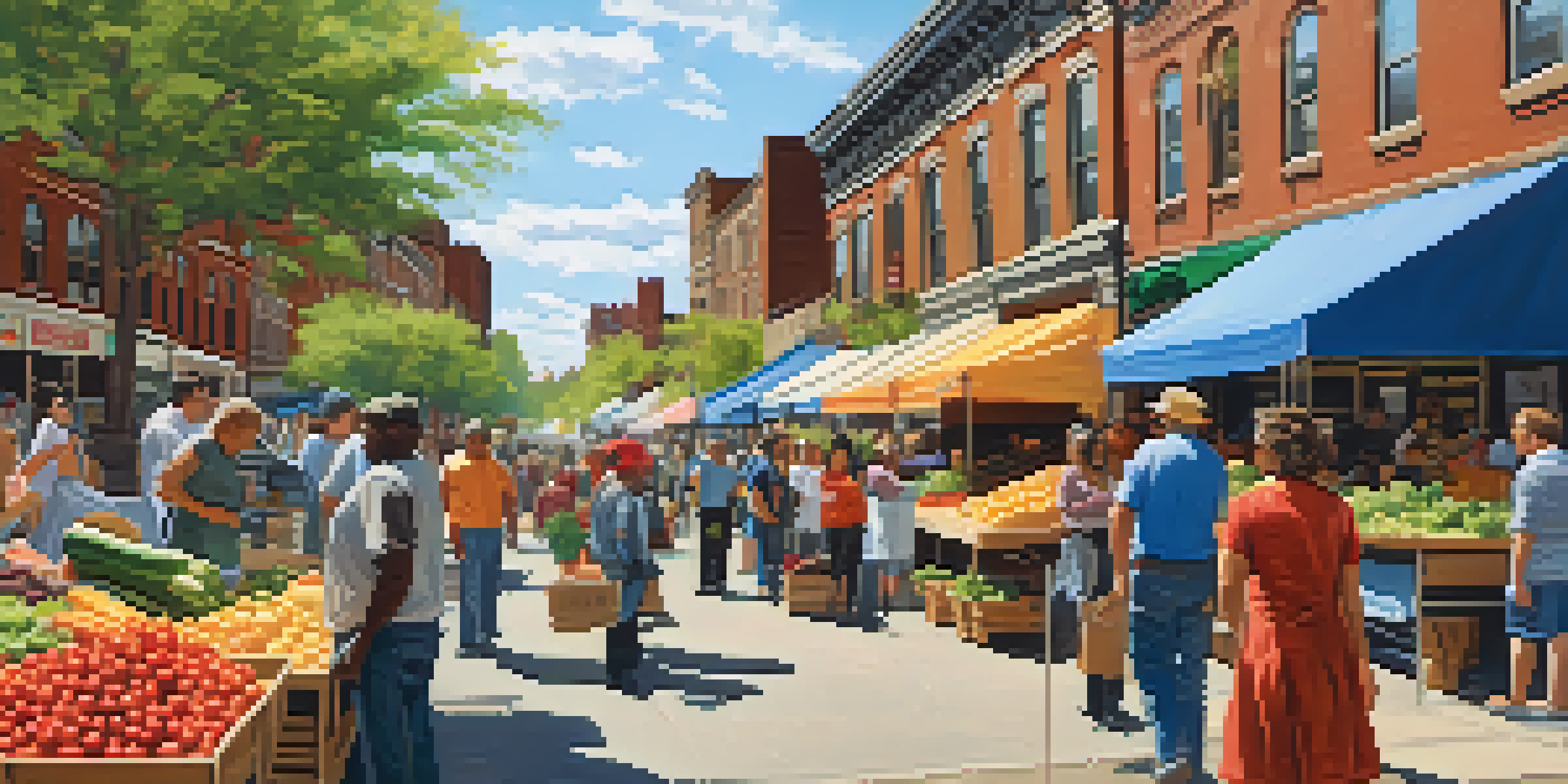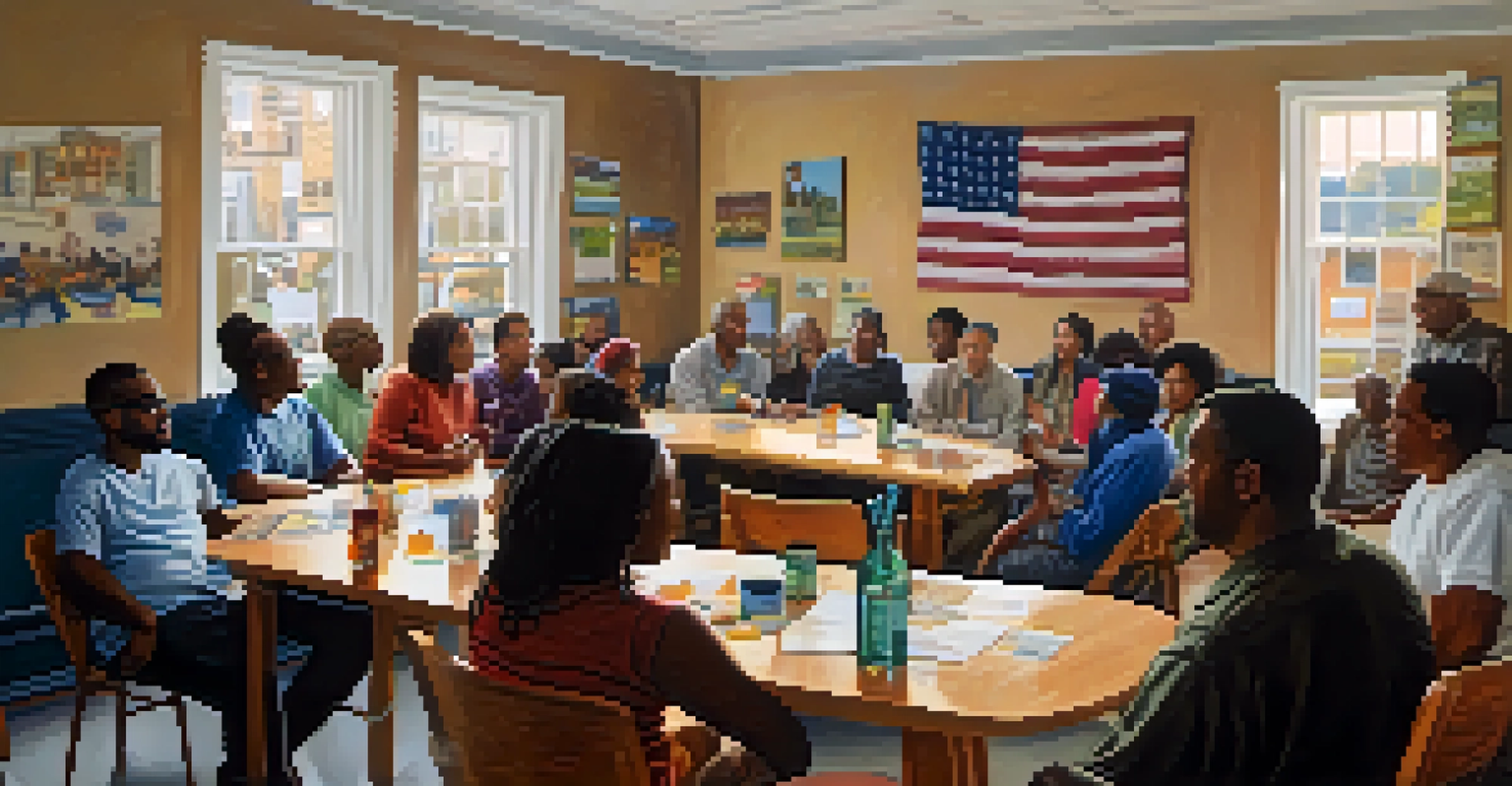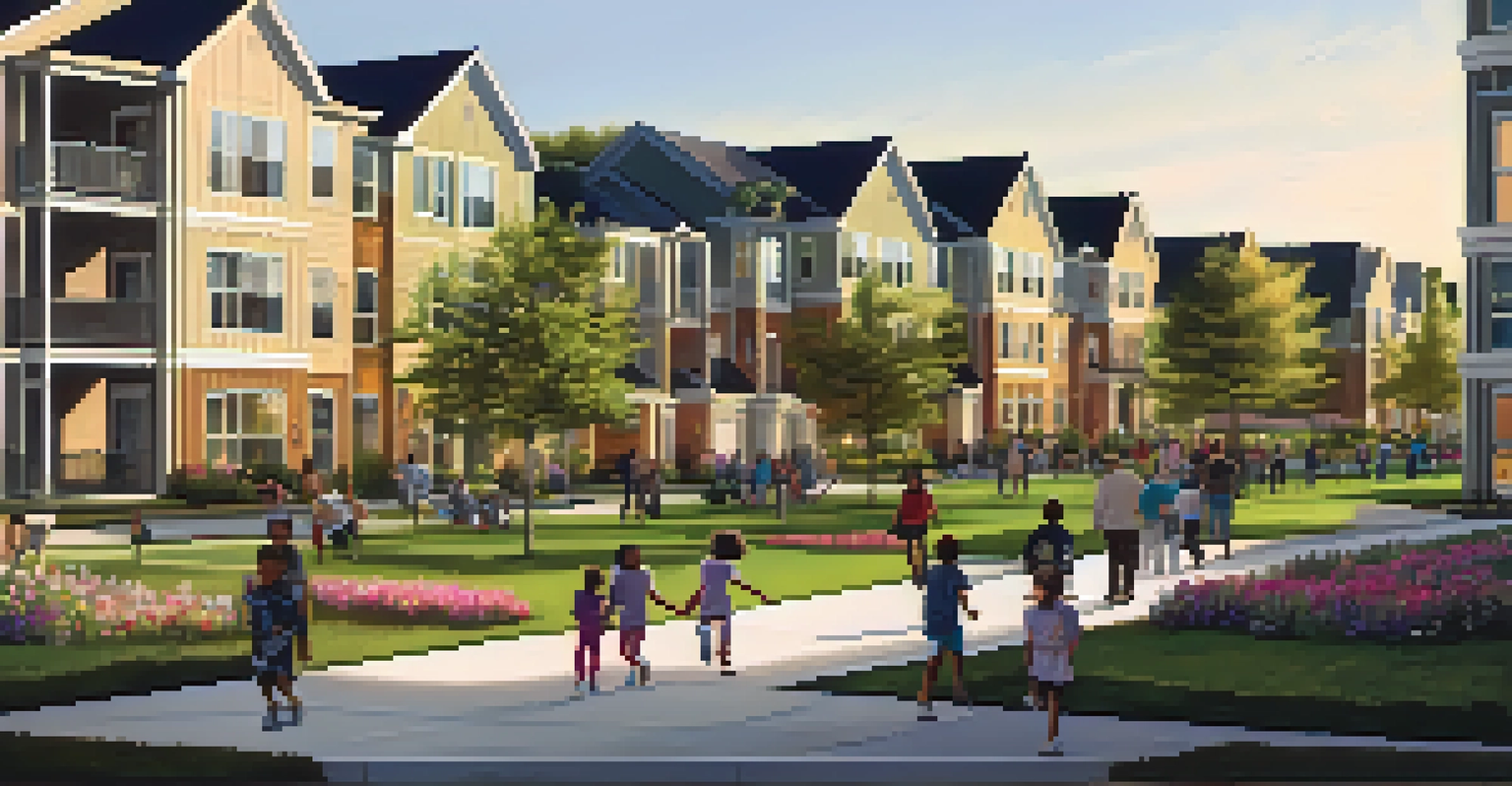Public Policy Responses to Gentrification in Newark

Understanding Gentrification and Its Impact on Newark
Gentrification refers to the process where urban neighborhoods undergo transformation, often leading to rising property values and displacement of long-term residents. In Newark, this phenomenon has sparked heated debates about community identity and affordability. As new businesses and developments emerge, long-standing residents may find it increasingly difficult to make ends meet.
Gentrification is a complex issue that can revitalize neighborhoods but also displace long-standing residents and erode community ties.
The impact of gentrification in Newark is multifaceted, affecting housing, local culture, and economic dynamics. While some see it as a sign of progress, others view it as a threat to the community's fabric. This tension highlights the need for effective public policy to balance growth with the preservation of local heritage.
Understanding gentrification is crucial for developing informed policies that address its effects. By acknowledging the unique context of Newark, policymakers can craft responses that support both new investments and existing residents.
Key Challenges Faced by Newark Due to Gentrification
One of the primary challenges Newark faces is the displacement of low-income residents as property values rise. Many families, who have lived in the city for generations, find themselves priced out of their neighborhoods, leading to a loss of community ties and cultural heritage. This displacement can have lasting impacts on social networks and local support systems.

Additionally, the influx of wealthier residents can shift the character of neighborhoods, often prioritizing new developments over the needs of existing communities. Local businesses that cater to long-term residents may struggle to compete with high-end retailers, further altering the economic landscape. These changes can create a sense of alienation among long-time residents.
Gentrification Displaces Long-Time Residents
Rising property values in Newark lead to the displacement of low-income families, undermining community ties and cultural heritage.
Addressing these challenges requires a comprehensive understanding of the socio-economic dynamics at play. Policymakers must consider the concerns of all stakeholders while striving for equitable development that benefits everyone in Newark.
Public Policy Frameworks Addressing Gentrification
In response to gentrification, Newark has implemented various public policy frameworks aimed at protecting vulnerable residents. These policies include affordable housing initiatives, zoning reforms, and community land trusts. By focusing on these areas, Newark aims to create a more inclusive environment for all its residents.
The greatest challenge facing cities today is to ensure that growth is inclusive and that all residents benefit from urban development.
Affordable housing initiatives are particularly crucial, as they provide low-income families with options that keep them in their neighborhoods. Programs that offer rental assistance or promote the development of low-income housing can help mitigate displacement. Furthermore, zoning reforms can help ensure that new developments include affordable units.
Community land trusts are another innovative approach, allowing residents to collectively own and manage land. This model not only fights against displacement but also empowers local communities to have a say in their development. Through these frameworks, Newark seeks to foster sustainable growth that respects the needs of its residents.
Community Engagement in Policy Development
Effective public policy requires the input and engagement of the community it serves. In Newark, community engagement has become a cornerstone of developing policies to combat gentrification. By involving residents in the planning process, the city can better understand their needs and aspirations.
Public meetings, forums, and surveys are just a few ways Newark gathers feedback from its residents. This collaborative approach not only empowers individuals but also ensures that policies reflect the diverse voices of the community. When residents feel heard, they are more likely to support initiatives aimed at preserving their neighborhoods.
Community Engagement Drives Policy Success
Involving residents in policy development fosters trust and ensures that initiatives reflect the diverse voices of the community.
Engaging the community also helps build trust between residents and local government. This trust is essential for fostering a sense of ownership and accountability in the decision-making process. Ultimately, a strong partnership between the city and its residents can lead to more effective and equitable policies.
Success Stories: Positive Outcomes from Newark Policies
Despite the challenges posed by gentrification, Newark has seen several success stories that highlight the effectiveness of its policies. For instance, various affordable housing projects have successfully provided homes to families who might otherwise be displaced. These developments not only offer shelter but also help maintain the cultural diversity of neighborhoods.
Community-led initiatives, such as local business support programs, have also thrived in Newark. By fostering entrepreneurship among residents, these programs help ensure that local businesses can compete and flourish, contributing to economic stability. This, in turn, enhances the overall vibrancy of the community.
These successes demonstrate that with the right policies and community engagement, it is possible to mitigate the negative effects of gentrification. They serve as a model for other cities grappling with similar issues, illustrating that positive change is attainable when everyone works together.
Future Directions for Newark's Gentrification Policies
As Newark continues to navigate the complexities of gentrification, future policies must adapt to emerging challenges. This includes addressing the needs of a growing population while ensuring that the core values of community and inclusivity remain intact. Policymakers must remain flexible and responsive to the changing landscape of the city.
Innovative solutions, such as mixed-income developments and adaptive reuse of vacant properties, can play a significant role in shaping Newark's future. These approaches not only increase housing options but also promote social integration within neighborhoods. By focusing on holistic development, Newark can foster a sense of belonging for all residents.
Nonprofits Support Vulnerable Populations
Nonprofits play a crucial role in advocating for marginalized residents, providing resources to navigate the challenges of gentrification.
Ultimately, the goal is to create a city where growth does not come at the expense of its most vulnerable populations. By prioritizing equity in urban development, Newark can pave the way for a more sustainable and inclusive future.
The Role of Nonprofits and Community Organizations
Nonprofits and community organizations play a vital role in addressing the impacts of gentrification in Newark. These entities often act as advocates for marginalized populations, ensuring their voices are heard in policy discussions. Their grassroots efforts can significantly influence local governance and planning.
Organizations focused on housing advocacy, economic development, and social justice work tirelessly to support residents facing displacement. They provide essential resources, such as legal assistance, financial education, and community organizing. This support empowers residents to navigate the complexities of gentrification effectively.

By collaborating with local government and other stakeholders, nonprofits can help bridge the gap between residents and policymakers. Their involvement ensures that policies are not only well-informed but also reflective of the community's true needs. Together, they can foster a more equitable Newark.